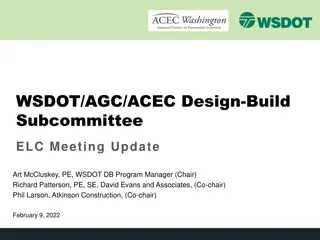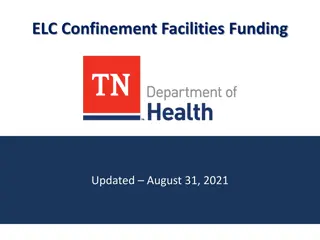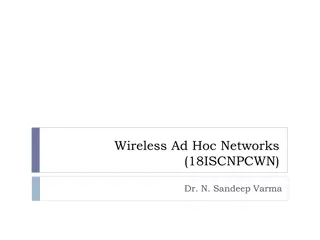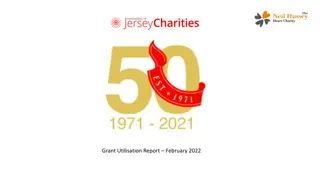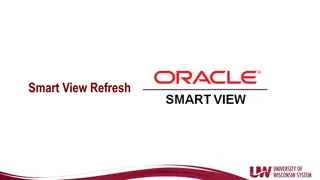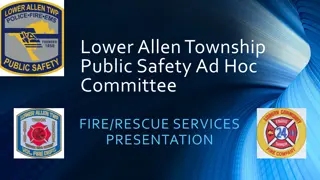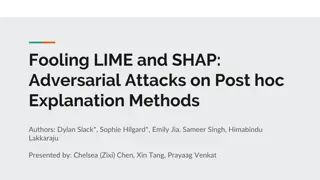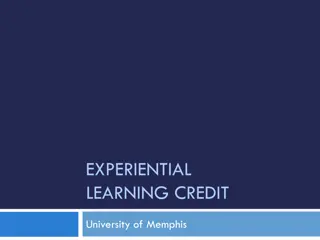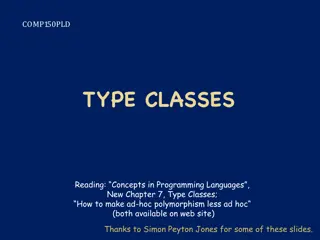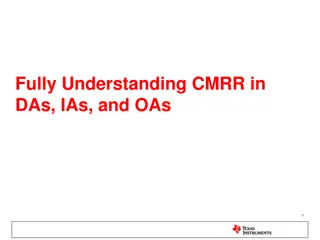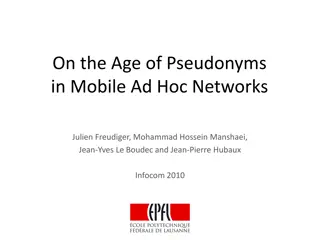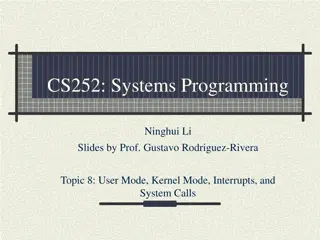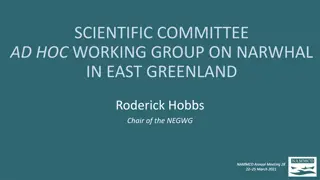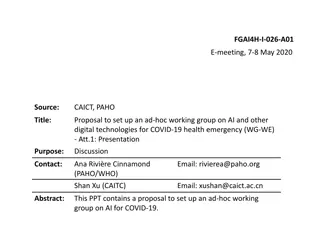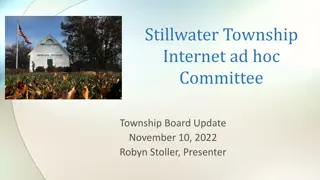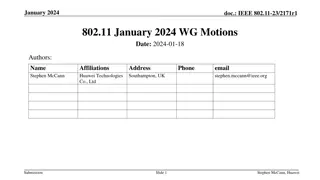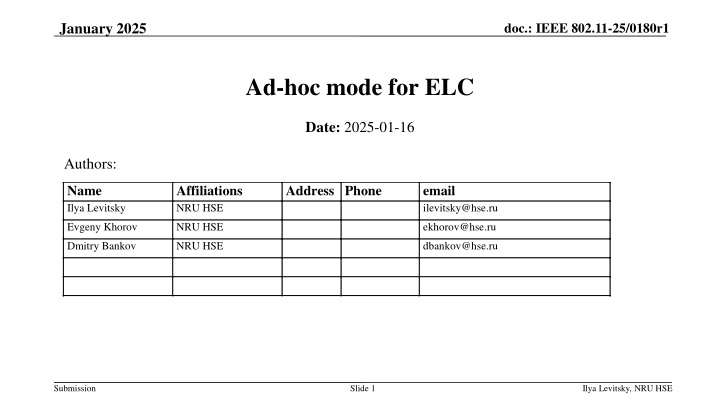
IEEE 802.11-25/0180r1 Ad-hoc Mode for ELC Applications Overview
Explore the applications and requirements covered in the IEEE 802.11-25/0180r1 document for ELC technology in January 2025. Discover insights on medical/industrial, VR, and V2X communications, highlighting the need for low latency, high reliability, and unique challenges faced in diverse use cases. Uncover how ELC aligns with specific application needs while addressing the limitations of ad-hoc communication.
Download Presentation

Please find below an Image/Link to download the presentation.
The content on the website is provided AS IS for your information and personal use only. It may not be sold, licensed, or shared on other websites without obtaining consent from the author. If you encounter any issues during the download, it is possible that the publisher has removed the file from their server.
You are allowed to download the files provided on this website for personal or commercial use, subject to the condition that they are used lawfully. All files are the property of their respective owners.
The content on the website is provided AS IS for your information and personal use only. It may not be sold, licensed, or shared on other websites without obtaining consent from the author.
E N D
Presentation Transcript
January 2025 doc.: IEEE 802.11-25/0180r1 Ad-hoc mode for ELC Date: 2025-01-16 Authors: Name Ilya Levitsky Affiliations NRU HSE Address Phone email ilevitsky@hse.ru Evgeny Khorov NRU HSE ekhorov@hse.ru Dmitry Bankov NRU HSE dbankov@hse.ru Submission Slide 1 Ilya Levitsky, NRU HSE
doc.: IEEE 802.11-25/0180r1 January 2025 Does ELC cover what applications need? To be successful in a certain use case / for a certain application, the communication technology shall FULLY cover the needs of that application. Alternatives should be noticeably insufficient for the same application. Let us consider the main applications considered so far in the TGbb and ELC SG (next slide). Submission Slide 2 Ilya Levitsky, NRU HSE
doc.: IEEE 802.11-25/0180r1 January 2025 Applications and their requirements (1/3) Medical/Industrial applications [1] RF prohibited or inappropriate due to EMI restrictions or high inter-BSS interference Low latency and high reliability are required (<5 ms latency, 99.9% reliability) [2] Moreover, user devices need to be small, cheap and power-efficient. The latter is covered in ELC PAR: Simpler integration of the IEEE 802.11 baseband with optical frontends Methods to reduce the peak-to-average-power ratio Hospital Industrial robot Submission Slide 3 Ilya Levitsky, NRU HSE
doc.: IEEE 802.11-25/0180r1 January 2025 Applications and their requirements (2/3) Wires = restrictions Massive VR (Internet/Intranet Access) [1] Suffers from restrictions of wired connections need wireless High capacity, low latency and high reliability are required. (<3 ms latency, 99.9% reliability, >1000 Mbps) [2] Covered in ELC PAR: Operations in new optical bands in the range of 400 nm to 600 nm and 1200 nm to 1600 nm New channelization (wider bandwidth) The use of wavelength division multiplexing (WDM) MAC support for the ELC PHY and multi-link operation Jeff J Mitchell / Getty Images VR club Conference hall Submission Slide 4 Ilya Levitsky, NRU HSE
doc.: IEEE 802.11-25/0180r1 January 2025 Applications and their requirements (3/3) V2X communication [1] Robust and interference-free communication Low latency and very high reliability are required. (delay < 5 ms, 1e-8 PER, 99.9% reliability) [3] Notably, the power efficiency and device cost seem to be less important the stations are deployed in cars and not in mobile hand-held or wearable devices. However, a vital element to reach the low latency reliably is ad-hoc communication All cars are equal -> ad-hoc is natural 5G has less spectrum that ELC can have, and RF has longer range -> interference (5G V2X uses random access) Platooning Submission Slide 5 Ilya Levitsky, NRU HSE
doc.: IEEE 802.11-25/0180r1 January 2025 Summary ELC does not seem to co-work well with ad-hoc. 802.11bb, 802.11be and 802.11bn rely on AP having a dominating and coordinating role in every scenario, which does not directly map onto the use case of V2X. The newest features like multi-link, higher bandwidth, multiple TX/RX antennas seem to be not applicable for ad-hoc networks. This is, the gap cannot be covered by the mere combination of the 802.11 amendments. We believe that ELC SG should consider ad-hoc communication. Submission Slide 6 Ilya Levitsky, NRU HSE
doc.: IEEE 802.11-25/0180r1 January 2025 SP 1 Do you agree that ad-hoc mode should be considered in the context of ELC/802.11br? - Y - - N - - A - Submission Slide 7 Ilya Levitsky, NRU HSE
doc.: IEEE 802.11-25/0180r1 January 2025 References 1. https://mentor.ieee.org/802.11/dcn/17/11-17-1743-01-00lc-proposed-usage- models-for-ieee-802-11-light-communication-study-group.pptx https://mentor.ieee.org/802.11/dcn/17/11-17-1778-01-00lc-consolidated- kpi-for-par-csd.xlsx https://mentor.ieee.org/802.11/dcn/18/11-18-0931-01-00lc-lc-outdoor- usage-models.pptx 2. 3. Submission Slide 8 Ilya Levitsky, NRU HSE

